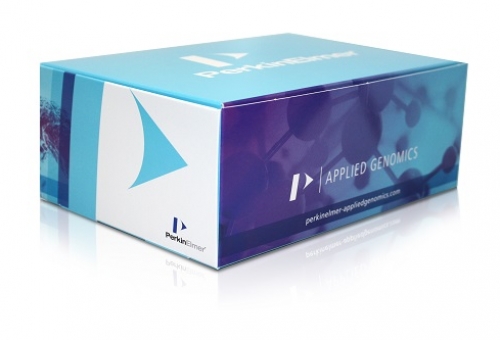
NEXTFLEX® Bisulfite-Seq Barcodes
Considerably reduce your per-sample sequencing cost by barcoded multiplexing
Increase your sequencing scale by pooling samples on a single flow cell
Compatible with bisulfite-sequencing on the Illumina® sequencing platforms
- Product description
- Kit Contents
- Citations
Pool Multiple Library Preparations in a Single Flow Cell Lane
The NEXTFLEX® Bisulfite-Seq Barcodes are designed to be used with the NEXTFLEX® Bisulfite-Seq Kit. Unlike other NEXTFLEX® Barcodes, the NEXTFLEX® Bisulfite-Seq Barcodes are methylated. The NEXTFLEX® Bisulfite-Seq Barcodes can be used to provide flexibility and high-throughput capabilities in sequencing applications. They significantly increase scale while reducing costs by allowing the user to pool multiple library preparations in a single flow cell lane. The NEXTFLEX® Bisulfite-Seq Barcodes kits accomplish this by using an indexed adapter with a 6 nt unique sequence. This allows for proper differentiation between samples, preventing poor reads from single base errors introduced during PCR.
These methylated adapters can be used with single, paired-end and multiplex reads.
Features
Up to 24 methylated adapters for multiplexing Illumina® RRBS and WGBS libraries are available
Considerably reduce your per-sample sequencing cost by barcoded multiplexing
Increase your sequencing scale by pooling samples on a single flow cell
Compatible with bisulfite-sequencing on the Illumina® sequencing platforms
Kit Specs
| Cat # | Name | Quantity |
| NOVA-511911 | NEXTFLEX® Bisulfite-Seq Barcodes-6 | 48 RXNS |
| NOVA-511912 | NEXTFLEX® Bisulfite-Seq Barcodes-12 | 96 RXNS |
| NOVA-511913 | NEXTFLEX® Bisulfite-Seq Barcodes-24 | 192 RXNS |
KIT CONTENTS
NEXTFLEX® Bisulfite-Seq Adapters (25 µM)
NEXTFLEX® Primer Mix (12.5 µM)
Selected Publications Citing the Use of the NEXTFLEX® Bisulfite-Seq Barcodes:
Agarwal, P., et al. (2015) CGGBP1 mitigates cytosine methylation at repetitive DNA sequences. BMC Genomics, 16:390. doi:10.1186/s12864-015-1593-2.
Berg, A., et al. (2015) Obesity is Associated With DNA Methylation in Population-Based Adolescents. Circulation. Poster: 131:AP260, Session Title: Obesity.
Bewick, A., et. al. (2016) On the origin and evolutionary consequences of gene body DNA methylation. PNAS. 113: 9111 – 9116.
Ramesh, V., et. al. (2016) Loss of Uhrf1 in neural stem cells leads to activation of retroviral elements and delayed neurodegeneration. Genes & Development. 30: 2199 – 2212.
Satgé, C. et. al. (2016) Reprogramming of DNA methylation is critical for nodule development in Medicago truncatula. Nature Plants 2, 16166. doi:10.1038/nplants.2016.166.
Urich, M. A., Nery, J. R., Lister, R., Schmitz, R. J. and Ecker, J. R. (2015) MethylC-seq library preparation for base-resolution whole-genome bisulfite sequencing. Nature Protocols 10, 475–483. doi:10.1038/nprot.2014.114.
van der Graafa, A., et al. (2015) Rate, spectrum, and evolutionary dynamics of spontaneous epimutations. PNAS. 112:21. pg. 6676–6681. doi: 10.1073/pnas.1424254112.
Ye, R., et al. (2015) A Dicer-Independent Route for Biogenesis of siRNAs that Direct DNA Methylation in Arabidopsis. Molecular Cell. doi:10.1016/j.molcel.2015.11.015.








